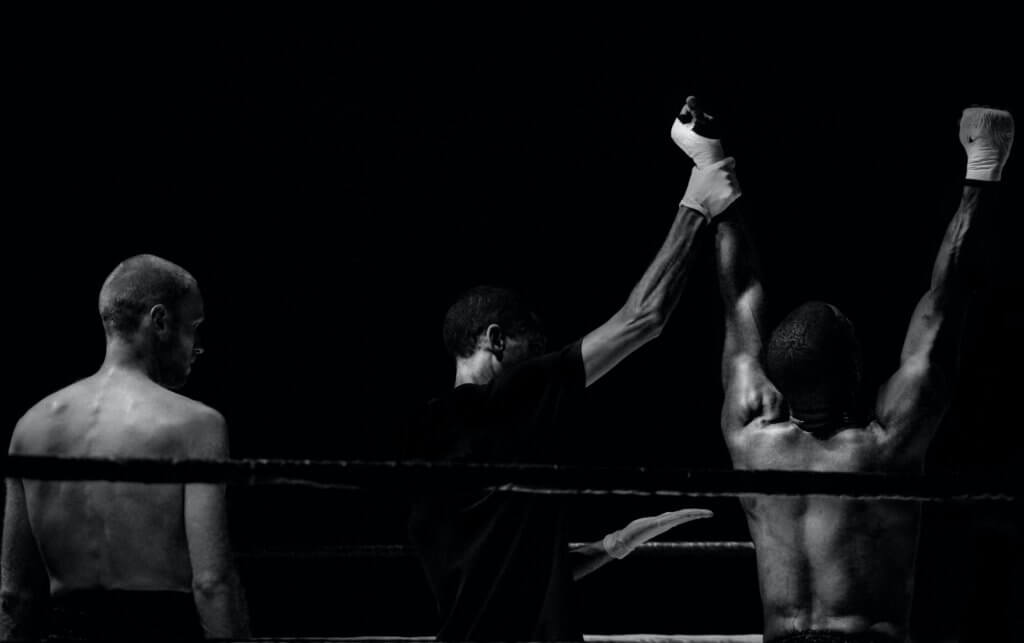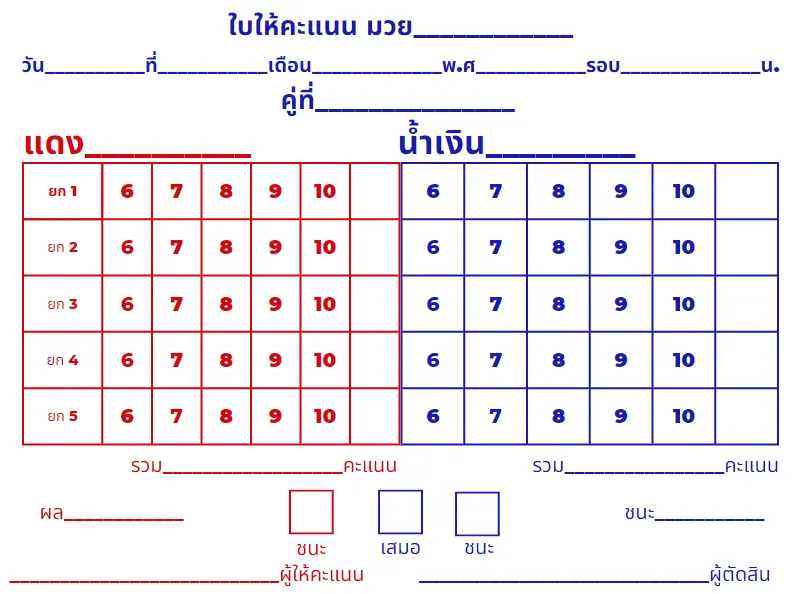As Muay Thai developed a more codified rule system for competition, it also developed its own scoring system. While Muay Thai’s scoring shares many elements with other combat sports, it is quite unique. The most fundamental difference is in its judging of the competition as a whole as opposed to the accumulation of its individual rounds. As most people are more familiar with boxing anyways, we’ll highlight some of the key components of boxing’s Ten Point Must system before drawing its differences with Muay Thai.

10 Point Must System
In a boxing match, no different than Muay Thai, three judges score it. Their final scores for the bout are an accumulation of points for each round. Each round is scored on a 10-point scale and each judge “must” award one boxer 10 points. Hence the 10 Point Must System. The perceived winner of the round will receive 10 points and the loser most often will receive 9 points. If the less performing boxer is knocked down, he’ll lose an additional point yielding him 8 points for the round. If one boxer clearly dominates the round, the loser may only receive 8 points even without a knockdown but this is rare. And if the judge sees the round as completely even, he can award both fighters 10 points.
After each round, the judges give their scores to the referee who then hands them to the clerk that counts and records the points. At the end of the match (assuming there was no Knockout to decide a clear victor) the points from each round are counted and as you may guess, the boxer with the most points wins. This is a relatively straight forward system that works.
Muay Thai Scoring
It works in part because there are so many rounds (up to 12) with each round its own competition. Muay Thai is shorter with only 5 rounds. This isn’t necessarily why Muay Thai scoring is different, but it’s worth noting. They are short, intense competitions that increase in intensity, peaking in rounds 3 and 4, and often mellowing out in the 5th. Judges score the completion as a whole, NOT by rounds. There are other differences, but this is the most fundamental difference in scoring Muay Thai competition that confuses non-Thais.
Scoring as a Whole
Thai judges still use the 10 point system, but it is more for their reference (think note taking) to give the final score. One opponent could out score in the majority of early rounds but lose momentum in later rounds and lose the fight. Or even win by a slight margin in rounds 1, 2 and 5, but lose heavy in rounds 3 and 4. In the first example, he did not keep control of the fight and in the second, his opponent’s decisive 3rd and 4th round scored gave his opponent a greater overall margin.
Primary Components of Muay Thai Scoring
Now there are three primary components that judges look for in their scoring of Muay Thai: Effective Technical Aggression, General Ringsmanship and Pure Aggression.

Effective Technical Aggression: 70%
Not too much different from other combat sports; the more clean, solid strikes landed, the better. This also accounts for roughly 70% of a judge’s decision. Keyword here is effective. Point boxing doesn’t not work, but it doesn’t necessarily work either. Simply landing a shot to an unprotected target won’t sway the judges. Strikes need to do some damage. Judges recognize damage a few ways. Strikes that move an opponent, take him off balance, cause him to look hurt (through some gesture, facial expression or audible grunt), draw blood or marking and obviously by knocking him down. It doesn’t matter if these shots are counters (defensive), delivered moving forward, sideways, backwards or from the ropes.
Again, powerful, clean strikes matter. There is some debate about punches, push kicks, low kicks and elbows not scoring. They score…if they’re effective. Now judges do consider the nature of strikes as they relate to Muay Thai. Knees, kicks to the body and kicks to the head get more attention, but again it’s all about effectiveness in Muay Thai scoring.
A Note on Stoicism
How you take a hit plays a huge role in how the judges score the effectiveness of your opponents strike. If you get swept and quickly jump up to continue fighting, the judges may look past it. If you take a hard hit to the body and act completely unfazed, the judges may look past it.
General Ringsmanship 20%
This has to do with a boxers ability to dominate his opponent, defend his attacks, set the pace and ultimately control the fight. One way to think of this is to ask who seems to be in whose house? Who seems to be deciding what’s going to happen moment to moment? You’ll often see Muay Thai fighters stand and trade kicks one after another in an exchange. Each boxer is trying to get the last kick in so as to say, “I was in control, I ended the exchange, I had the last word.” Defensive prowess isn’t scored quite as much in Muay Thai as it is in boxing, but this is where it applies. A strong defense demonstrates ringsmanship.
Pure Aggression 10%
This may technically play the smallest factor in a judge’s scoring, but aggression is very important in Muay Thai. This is about who is forcing the action. Avoiding exchanges is looked down upon by judges. Muay Thai is so much about heart.

1st and 5th Rounds
There are some misconceptions about the 1st, 2nd and 5th rounds in Muay Thai — questions about if the first two rounds score, why the action doesn’t pick up until the 3rd, why it often stops in the 5th, etc. We’ll take a closer look at these unique components of Muay Thai in the next article.







